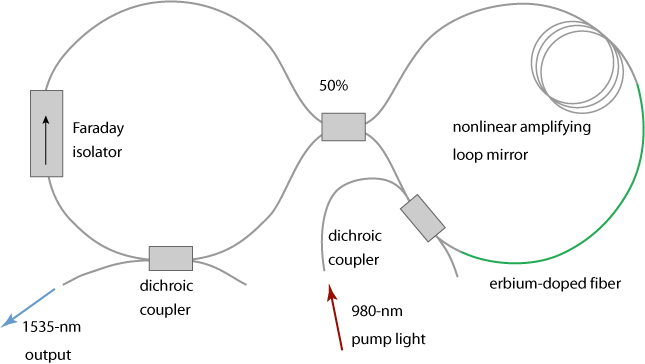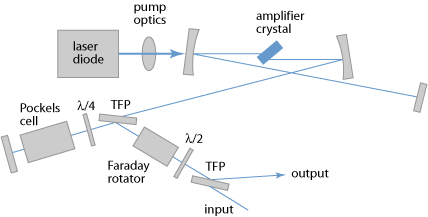
RP Fiber Power – Simulation and Design Software for Fiber Optics, Amplifiers and Fiber Lasers
| Overview | Features | Speed | Model |
| Data | Interface | Demos | Versions |
The Ultimate Tool for Passive and Active Fibers Devices
RP Fiber Power is a powerful modeling software for designing and optimizing fiber devices – in particular, fiber amplifiers and lasers as well as other types of waveguide lasers, but also fiber couplers, multi-core fibers, helical core fibers and tapered fibers.
The software offers both efficient power propagation and full numerical beam propagation. Ultrashort pulse propagation can also be studied, for example in fiber amplifier systems, mode-locked fiber lasers, telecom cables and automatically optimized pulse compressors.
RP Fiber Power is
- an enormously versatile tool for power users,
- but at the same time (particularly since V6 with custom forms) also very suitable for users who are not (or not yet) experts in the field.
It is a must-have for anyone seriously dealing with fiber devices – be it in industrial development, scientific research or in education. Its user interface combines uttermost flexibility with an easy start. It is therefore equally well suited for efficient routine checks and for most sophisticated simulation work.
The Product Brochure
You can download the brochure in PDF format.

Demonstration Videos
Our demo videos (updated in 08/2018) give you a direct impression particularly of the handling of this software. You can verify that we have a high-quality user interface, making it easy for you to get started, and allowing you to set up even most sophisticated simulations.
Here is our introduction video:

Applications
RP Fiber Power can be applied to analyze and optimize a wide range of devices:
| Devices | Examples for Applications |
|---|---|
single-mode and multimode fibers
|
calculate mode properties such as amplitude distributions, effective mode areas, effective indices, chromatic dispersion; calculate fiber coupling efficiencies; simulate effects of bending, nonlinear self-focussing or gain guiding on beam propagation, higher-order soliton propagation |
fiber couplers, double-clad fibers, multi-core fibers,
|
simulate pump absorption in double-clad fibers, study beam propagation in fiber couplers, light propagation in tapered fibers, analyze the impact of bending, cross-saturation effects in amplifiers, leaky modes, etc. |
fiber amplifiers
|
study the gain and saturation characteristics (continuous-wave or pulse amplification), energy transfers in erbium-ytterbium-doped amplifier fibers, influence of quenching effects, amplified spontaneous emission etc. in single amplifier stages or in multi-stage amplifier systems |
fiber-optic telecom systems
|
analyze dispersive and nonlinear signal distortions, impact of amplifier noise, optimize nonlinear management and placement of amplifiers |
fiber lasers
|
analyze and optimize the power conversion efficiency, wavelength tuning range, Q switching dynamics |
ultrafast fiber lasers and amplifiers
|
study pulse formation mechanisms, stability ranges, impact of nonlinearities and chromatic dispersion, parabolic pulse amplification, optimum dispersive pulse compression, feedback sensitivity, supercontinuum generation |
pulsed and ultrafast bulk lasers and amplifiers
|
study Q switching, the mode-locking behavior, find the required characteristics of saturable absorbers, analyze the feedback sensitivity, chirped-pulse amplification study stability limits of regenerative amplification |
Get more information:
- Learn about the software's features and the used physics model.
- See also our large selection of case studies and the video demos!
- Download the RP Fiber Power PDF brochure (45 pages).
- See also the frequently asked questions.
- See our free tutorial "Passive Fiber Optics", for which the software has been used extensively, and also the tutorial "Modeling of Fiber Amplifiers and Lasers", which explains concepts and methods.
If you have any further questions or need a quotation:







